by Contributed | Jun 11, 2021 | Technology
This article is contributed. See the original author and article here.
As announced in a previous blog post, dynamic search ads can be created within search campaigns via the use of ad group type. Within a search campaign, you now have the option to create a standard ad group (containing expanded text ads, responsive search ads, and keywords) or a dynamic ad group (containing dynamic search ads and auto targets).
Starting this month you can no longer add, update, or retrieve campaigns that only support dynamic search ads. The campaign type of your existing campaigns has been updated from “DynamicSearchAds” to “Search”. The ad groups are now considered “dynamic” ad groups, but there are no structural changes i.e., they contain the same auto targets and dynamic search ads as before.
As always please feel free to contact support or post a question in the Microsoft Advertising developer Q&A forum.
![Records Management and Driving Compliance [M365 Meetup for Government]](https://www.drware.com/wp-content/uploads/2021/06/fb_image-74.jpeg)
by Contributed | Jun 11, 2021 | Technology
This article is contributed. See the original author and article here.
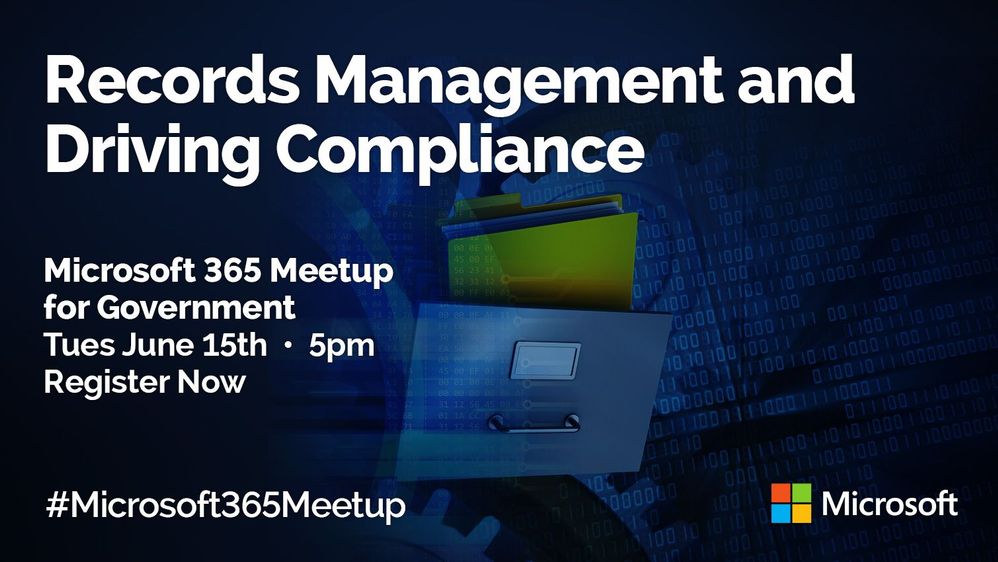
How are organizations digitally transforming to become leaders in records management, information protection, and eDiscovery? Microsoft 365 provides integrated and intelligent capabilities to help you discover, protect, and govern your business-critical information across your digital estate. At this session we will hear from subject matter experts and their lessons learned for success.
When: Tuesday, June 15th, 2021 @ 5pm EDT
Register for the session today!
Presenters:
Matt Littleton, Compliance Global Blackbelt, Microsoft
https://www.linkedin.com/in/matt-littleton/
Tim Shinkle, VP, Millican & Associates, Inc.
https://www.linkedin.com/in/tim-shinkle-4583121/
https://millican-assoc.com/
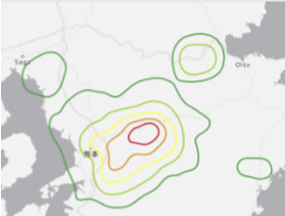
by Contributed | Jun 11, 2021 | Technology
This article is contributed. See the original author and article here.
We are pleased to announce the general availability of our Elevation API. For any given point on the Earth’s surface, the Elevation API returns its elevation measured from the mean sea level. Azure Maps Elevation API will provide pole to pole coverage with <4M absolute and <2m relative accuracy. The elevation data uses a digital terrain model (DTM), man-made entities (e.g., buildings) are artificially flattened and elevation is measured to the ground surface.
Use cases & API Types
Azure Maps Elevation API is designed to make it easy for developers to build various scenarios leveraging elevation data. The following options are offered along with POST methods to support input of large data.
Get Elevation for Point(s)
|
Get Elevation for Bounding Box
|
Get Elevation for Path/ Profile
|

|
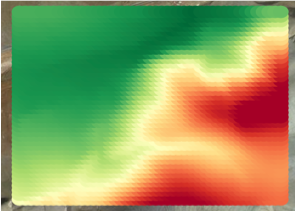
|

|
Solar power plant planners can measure elevation across large number of points to determine ideal locations for placing solar panels.
|
Mining engineers can measure elevation at specified intervals in each given grid and perform cut/ fill analysis.
|
Fleet managers can measure elevation gain across routes and take appropriate safeguards e.g., refrigeration, braking etc.
|
API documentation and code samples

by Contributed | Jun 11, 2021 | Technology
This article is contributed. See the original author and article here.
Written by Patrick Chao, the Teaching Assistant for the course

In the spring semester of 2021, 19 students from The University of Texas at Austin took the Introduction to Machine Learning course taught Patrick Chao, Teaching Assistant for the course and Professor Danna Gurari


Before taking the course, nearly half of the students had no programming background. By the end of the course, the students learned the foundations of Machine Learning and gained hands-on experience developing many machine learning models for different problems in Python. As part of the course, the students also paired up to develop final projects of their own design, with many groups achieving their research goals using the power of Microsoft Azure.
In one of team’s final project, their goal was to solve a problem for small family-owned businesses with Optical Character Recognition (OCR) powered by Azure. The problem they aimed to address is that many business owners must manually enter data from printed or handwritten tickets to spreadsheets, which can be time-consuming. In the experimental results, the team explains that there is lower accuracy for tickets of certain types and provide possible solutions to improve the performance.
Another team aimed to develop a model for poetry classification based on time period. The problem is that it is not easy for human readers to grasp the characteristics of poetry in all periods. Moreover, the classification of time periods is an intense debate topic in the fields of humanities. The team used natural language processing techniques to analyze the title and content of poetry. With text analytics in the Azure Cognitive Services, they extracted key phrases from each poem as a helpful feature to train their model. Ultimately, their model could distinguish the period of poetry better than most English majors. The next step is to understand how the model can support the study of English literature today.
Lastly, another team aimed to address that vaccine hesitancy is a problem, and it slows down the speed of the population receiving the vaccine. They proposed a chatbot to answer questions and lessen worries. The chatbot detects a person’s sentiment from input questions and returns the appropriate information in a way that is tailored towards the person’s sentiment. Azure Sentiment Analysis API is used to detect the sentiment.
Detailed documentation and an easy-to-use interface are big advantages of Azure. After a brief introduction to Azure, most students could explore the Azure services on their own and leverage the services in their final projects.
Interested in Learning more see the following Microsoft Learn Modules
How to build a basic chatbot – Learn | Microsoft Docs
Create Intelligent Bots with the Azure Bot Service – Learn | Microsoft Docs
Build a chat bot with the Azure portal – Learn | Microsoft Docs
Discover sentiment in text with the Text Analytics API – Learn | Microsoft Docs
Explore Natural Language Processing in Microsoft Azure – Learn | Microsoft Docs
Evaluate text with Azure Cognitive Language Services – Learn | Microsoft Docs
Process natural language with Azure Cognitive Language Services – Learn | Microsoft Docs
Introduction to Natural Language Processing with PyTorch – Learn | Microsoft Docs
Read Text in Images and Documents with the Computer Vision Service – Learn | Microsoft Docs
![[Guest Blog] One person’s attempt to address the gender imbalance in tech](https://www.drware.com/wp-content/uploads/2021/06/fb_image-70-472x675.jpeg)
by Contributed | Jun 11, 2021 | Technology
This article is contributed. See the original author and article here.
This blog was written by Windows Development and Internet of Things (IoT) MVP Bryn Lewis. Bryn shares his work with students at an independent girl’s school, provides ideas, and seeks input for getting students to embrace a career in tech.
I have been in the software business for 30+ years building solutions predominately on the Microsoft platform. Over the years I have worked in a variety of areas including healthcare, industrial process control, mobile radio, online gambling, a couple of dotBombs, finance, and the Internet of Things(IoT). In the 2000’s I worked for Microsoft Consulting Services(MCS) in Auckland, New Zealand for a couple of years.
These days, to pay the bills, I work on an Azure Platform as a Service(PaaS) based Fintech application for managing portfolios of foreign currency instruments. My “side hustle” is building IoT solutions for customers with the Azure IoT Services. Recently, I have been working on an open source project which provides the “plumbing” for connecting embedded devices over low power wireless technologies like LoRaWAN to the Azure IoT Services.
I am also really interested in how IoT can be used for good in citizen science and education which has been at the core of one of my other projects…
For the last six years I have run weekly sessions for senior students at St Margaret’s College an independent girls’ school in Christchurch, New Zealand.
The sessions are a combination of coding, electronics, and hard materials which I continuously adapt to align with the interests of the students. The sessions compete with the school production, debating, rowing, and other official school activities so there are usually only 4-6 students.
I have always struggled with balancing making it fun/interesting and not too geeky/boring. After quite a bit of “trial and error”, (in the first year it felt like a lot of error) I found the best approach was students building “passion projects” (often with an IoT component) which were a blend of coding, electronics and hard materials.
Passion Projects
One student, who was always listening to music on her iPod, built an MP3 player with the music stored on a MicroSD, a 16×2 LCD displaying the current track and time. It had a battery powered real-time clock to keep track of the time and a five button UI (next/previous track, volume up/down and play/pause).
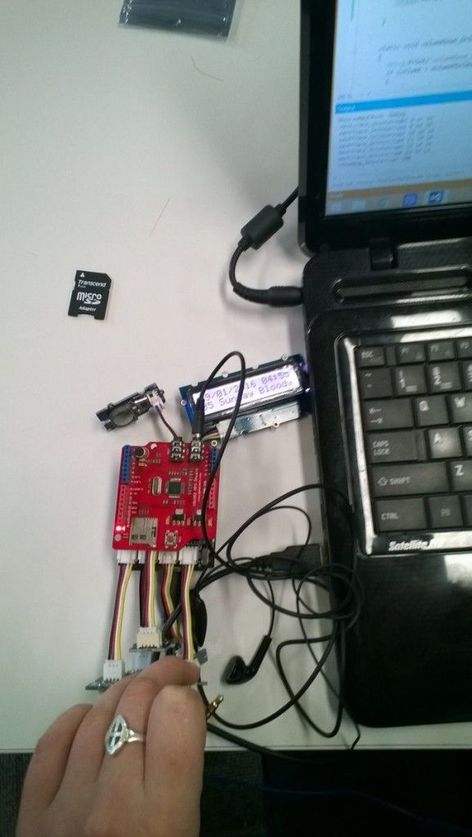
At the end of the term she said, “I’m so pleased it works but so over U2″ (I chose the playlist, figured Nine Inch Nails wouldn’t have been appropriate). I was so pleased when she went to Otago University to do a computing degree.
Mathematics by stealth
This student’s parents were first responders and her passion project was building something to monitor a patient’s pulse rate and core temperature. We started with an ear-clip sensor which could detect a heartbeat. Then she wrote code to count the individual heartbeats and convert that to beats per minute (BPM). Like a nurse manually taking a patient’s pulse, she started with counting the number of heartbeats in 15 seconds then multiplying by 4 to get the BPM.
There were many revisions where she tried longer and shorter periods, measuring the duration between heartbeats, then different averaging approaches until the solution was quick to get a reading, accurate and responsive.

Mathematics went from a chore to something with a practical application.
Physics by stealth
This is another student working out how to convert X/Y/Z acceleration G values into pitch and yaw.

The whiteboard desks are great but do make a mess of the cuffs of white school shirts.
Skills build over time
One student had been coming to the after-school sessions for several years. This allowed her to develop her skills to a high enough level to build a quite complex solution. She built a SmartAG sensor for orchards for her final year project. She was awarded a University Scholarship for this project and is off to Otago University to study Information Systems and Law.
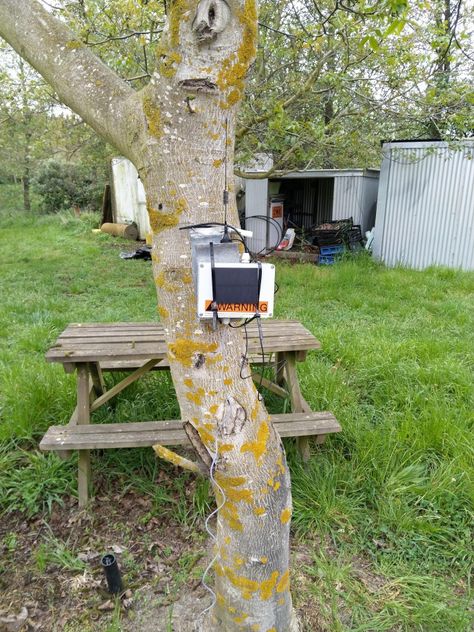
It has a robust weather proof enclosure, solar panel + lithium polymer(LiPo) battery, soil moisture, temperature + humidity sensor and a microcontroller which sends telemetry over a LoRa wireless link to a basestation.

The basestation uploads the sensor data to Azure IoT Central where it can be viewed in a series of dashboards.
It’s not easy but every so often the stars align and a passion project can also result in academic success as well.
Why do I run the classes
When I was at University in the late 80’s there were lots of women in the first year classes but the numbers fell quite rapidly to between 0-5% in my final year. I have now been in the industry for more than thirty years, the gender balance has never been great and in some specialist areas, like embedded development, it is really abysmal.
Walking home one day I happened to listen to this NPR podcast. Which lead me down a rabbit hole…
So why aren’t there many women in IT now?
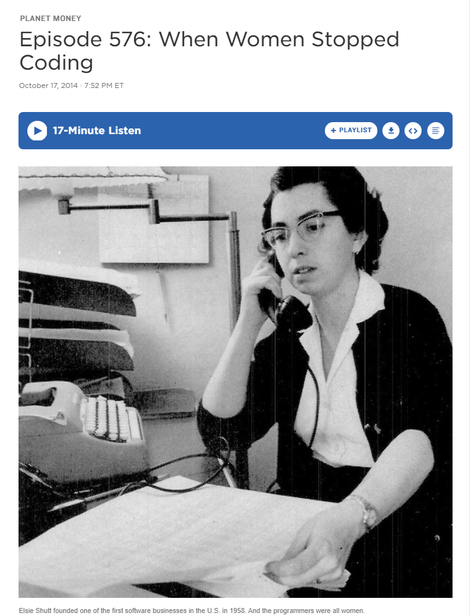
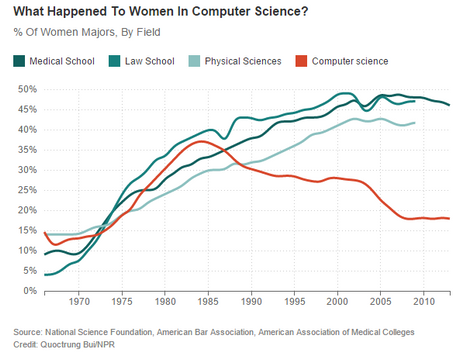
There have been great female role models in tech including:
This is Margaret Hamilton at the Houston Mission Control Center

Code: Debugging the Gender Gap explores this issue in depth
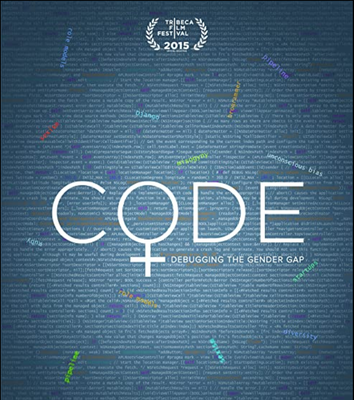
One of the key things identified in podcasts and books was the need for positive role models for female students so I figured a middle-aged (ok mid 50s) balding guy was better than nothing.
Call To Action
One of my favourite books as a child was the Lorax by Dr. Seuss. So, in the words of the Onceler, “Unless someone like you cares a whole awful lot, nothing is going to get better. It’s not.”
So, do you care enough to try and make a difference to the gender balance in computing? Then, go find a nearby school, talk to some teachers. Share with them your knowledge and help young women to understand that technology can be fun and interesting, as well as a genuine career path.
Sometimes it can be immensely satisfying and other times disappointing. But in my experience, it’s so worthwhile.

![Records Management and Driving Compliance [M365 Meetup for Government]](https://www.drware.com/wp-content/uploads/2021/06/fb_image-74.jpeg)








![[Guest Blog] One person’s attempt to address the gender imbalance in tech](https://www.drware.com/wp-content/uploads/2021/06/fb_image-70-472x675.jpeg)










Recent Comments